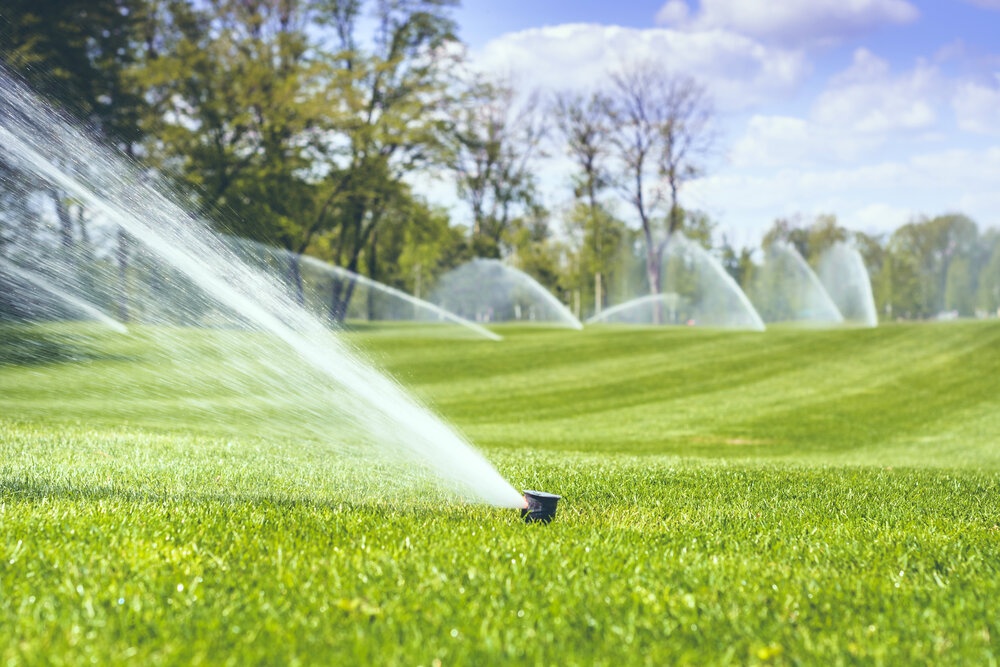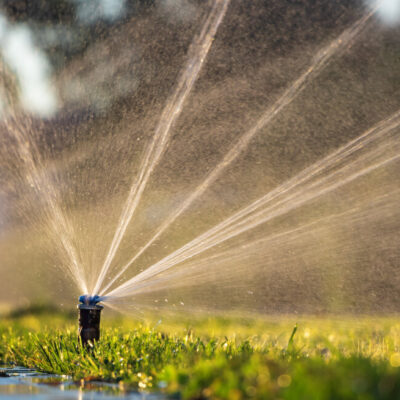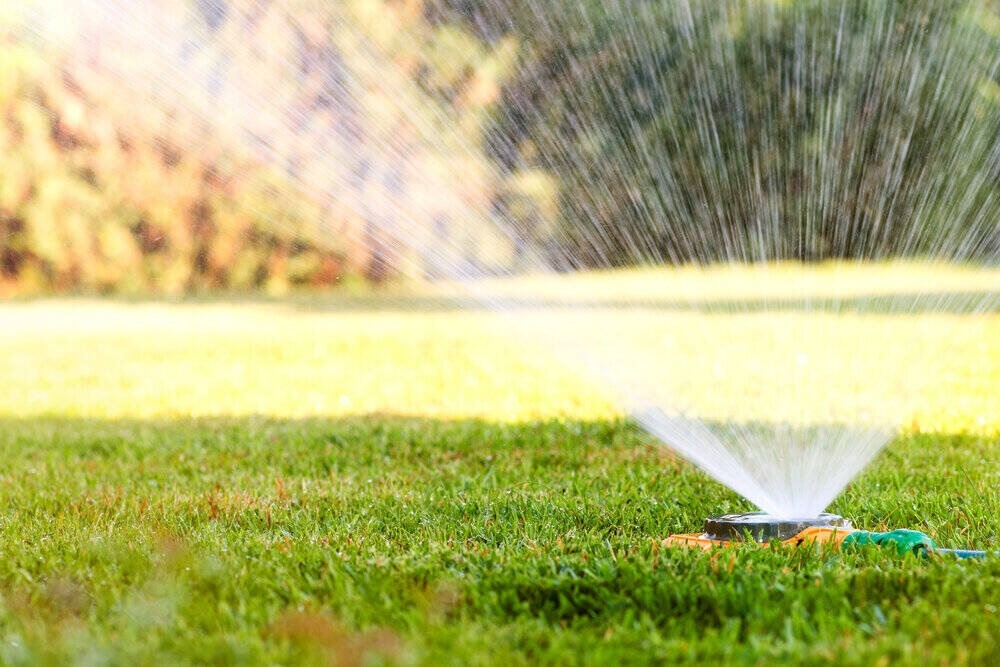If you put the words “water” and “buffalo” into one sentence, what’s the first thing that springs to mind? Most people would probably answer, “Well, Bubalus bubalas, of course." Actually, they probably wouldn't use its scientific name but would revert to its more popular name - the water buffalo.
But if you're an irrigation buff, you might reply, "Why, it's Joseph Lessler of Buffalo, New York, of course.” The reason for that is that it was he, in 1872, who registered a patent entitled “Improvement in Lawn Sprinklers.”. It was U.S. patent number 121949, and in context, it described a portable (note, not a potable) water fountain and sprinkler, and it led the way to today’s modern lawn sprinkler systems.
But how about the lawn? Where did that idea originate?
The Origins of the Lawn
It’s quite probable that early lawns were green areas like village greens and town commons where locals would allow their livestock to graze. The grazing meant that short grass was left behind. The aristocracy also developed similar green spaces around their castles – again, probably to feed their animals.
The word “lawn” we use today is indeed thought to have developed in the Middle Ages from the word “launde,” used to describe a glade or opening in the forest.
The first lawn of note was part of the Gardens of Versailles, designed for Louis XIV by André Le Nôtre in the last 17th century. It was constantly trimmed by palace gardeners using sickles and scythes to create a green carpet also referred to as the "Royal Alley." It was the centrepiece of the palace gardens and the first recorded ornamental lawn in history.
The Development of Lawn Sprinkler Systems
After Lessler’s patent in 1871, other designers joined the sprinkler development race, but all of the models were heavily engineered and almost unrecognisable as lawn sprinklers. But by the 1920s and 30s, they began to look more functional and something we would likely recognise today.
These early sprinkler systems usually had a cast metal base and between two to four rotating arms, each fitted with a nozzle made from brass. Typically, in operation mode, they delivered a fountain-like upward spray, while others has small propellers built whose job it was to configure the spray in various patterns.
There were also some novelty-type sprinklers built around that time in the form of frogs, squirrels, or turtles. They looked interesting but weren’t very effective.
The Components of a Modern Lawn Sprinkler System
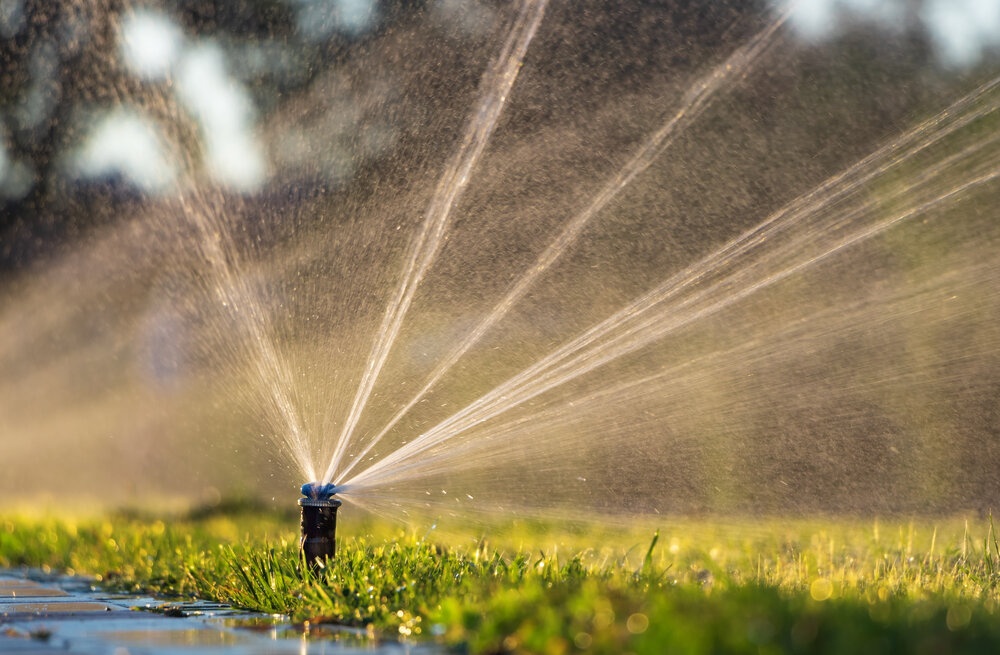
Today's modern lawn sprinkler systems function as well as they do, thanks to the components of which they comprise. Each component has its own job within the system and is designed for optimal performance regardless of whether it is a sprinkler head or a shut-off valve,
The conventional lawn sprinkler systems used today in the gardens of residential properties carry out most of the work they are designed to do underground. As systems go, they are not inordinately complex. Let's take a look at each of the components in turn and the job it does. Apart from the water source itself, a standard lawn sprinkler system consists of:
- A controller or timer
- A backflow prevention device
- A water pump
- A water flow meter
- Control valves
- A shut-off valve
- Pipes and risers
- Sprinkler heads
The Timer or Controller
Modern lawn sprinkler systems are all about automation, and the controller or timer is the centrepiece. It’s what controls the flow of water from its source to the rest of the system and its components. It commands the opening and closing of the valves, which, in turn, in a multi-valve system, gives you the ability to manage which areas get watered at a particular time.
A Backflow Prevention Device
If your lawn sprinkler system is connected to a potable water source, a backflow prevention device is the thing that stops contaminated water from running back into your drinking water.
If the pressure within your lawn sprinkler system is greater than the pressure in the water source, it creates back pressure, which forces the water back into the potable water source.
There is also something known as back syphoning. Back syphoning happens when loss of pressure or negative pressure pulls water from the sprinkler system back into the potable water source.
You need to understand the five fluid categories to appreciate the potential risk. If you are concerned, installing a backflow prevention device prevents both backflow and back siphonage.
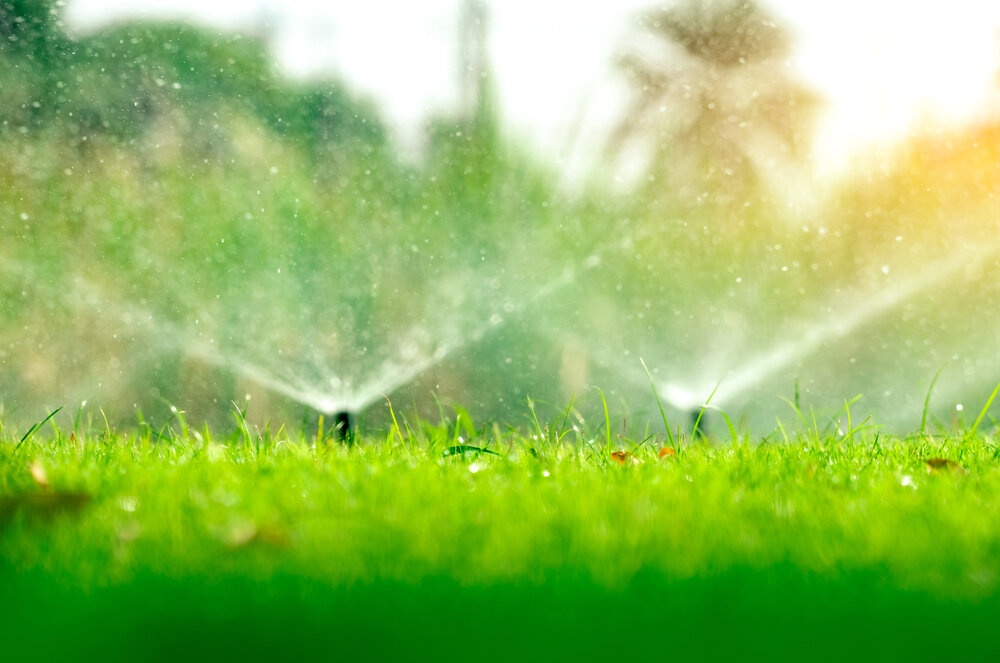
The Water Pump
Depending on the size of your lawn sprinkler system, you might get away with a single booster pump on a small system, or may not need one at all, but the larger the system, the more irrigation pumps you are likely going to have to install.
In some instances, the pressure of your municipal water supply might be enough for a garden hose connected to a portable sprinkler. But a pucka irrigation system needs considerably more pressure to work properly, and this requires the installation of a least one water pump to force the water through the pipes to the sprinkler heads.
A Water Flow Meter
A water flow meter is used to measure the volume of water you use to irrigate your lawn. Without one, you have no real idea how much water is being delivered. Once installed, a water flow meter shows you precisely how much water is passing through the pipes.
It not only helps you to calculate how long to run the water for to deliver the right amount of irrigation, but a fall in the reading can also indicate you have a leak or blockage.
Control Valves
Water pressure alone is not normally high enough to operate a whole lawn sprinkler system unless the lawn is very small. The way around this is to install control valves. Control valves are the components that are used to send water through to different zones, blocking off designated zones to facilitate enough pressure for reach each zone and function independently in its own right.
The Shut-off Valve
While the control valves are designed to control the flow of water to the various zones of a lawn sprinkler system, the shut-off valve's job is to cut off the water supply to the whole system. It is usually installed close to the water source.
The Pipes and Risers
The pipes are the main part of the system network that carries the water around the system.
The risers are vertical pipes connected from the underside of the sprinkler heads to the system pipes. They carry the water on the final part of its journey up into the heads.
The Sprinkler Heads
The sprinkler head performs the final task of a lawn sprinkler system - that of spraying the water out across the surface of the lawn. They are many types, the most common of which are:
- Pop ups – hidden below the surface until they are called into action and pop up to do so and then retract when their work is done.
- Shrub-type sprinklers – are raised above ground level on risers.
Both types are available with rotary or spray heads. Rotary heads deliver a single rotating stream of irrigation water or multiple streams. Spray-type sprinkler heads deliver a fixed pattern of irrigation water. You can also get low-flow and drip sprinkler heads.
Rotaries tend to be used for medium to large lawns, whereas fixed pattern sprinkler heads are more suitable for small lawns and flower beds. Low flow and drip heads are for delivering small amounts of water directly to plant root zones.
The Basic Principles of the Workings of Lawn Sprinkler System.
You've now read about the main components of a lawn sprinkler system and can see how water gets from A to B, but it's the timer or controller that is the brain of the system. They are available with various levels of complexity and program options.
An example of a timer at its most basic is the HydroSure Mechanical Water Tap Timer. With this model, you can automate your garden watering in less than a minute with a singular twist of its dial.
At the other end of the scale, you have Hunter BTT 2 Outlet Bluetooth Tap Timer. It can be fitted with ease to any standard hose-threaded tap for indoor or outdoor use. The Bluetooth facility and the free Android or iOS app you can download will set schedules and run irrigating times as per your instructions, with 1-2 zones for flexible watering, and 4 start times to choose from, with a run time from 1 second to 24 hours.
The best way to ensure all your lawn sprinkler system work together is to buy an outdoor watering kit, which you can add to for customisation.
